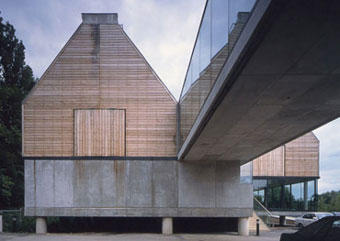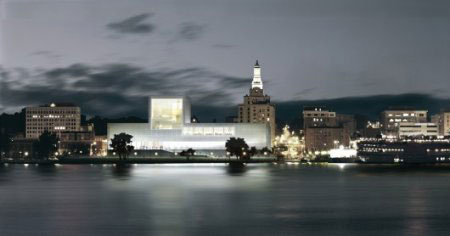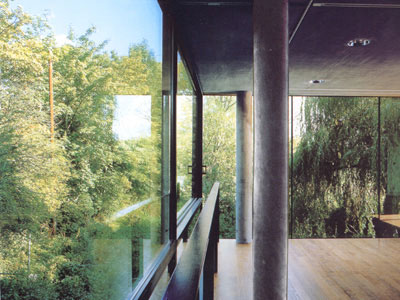Iowa Capital Dispatch
December 11, 2025
A federal judge has ruled federal animal-welfare inspectors can no longer conduct “courtesy visits” at dog-breeding operations while allowing violations to go unreported.
The ruling could... more

Last week while riding my bike along the swollen Mississippi, my mind took me back to the architect selection process for the Figge Art Museum. One of the reasons David Chipperfield was chosen was he’d designed several projects alongside rivers, most notably (at that point*) the River and Rowing Museum by the Thames near Henley.
We first met Mr. Chipperfield (now Sir) at that site and listened to him describe how even more stringent were floodplain building requirements in the UK than in the states. And how, in any case, a river is a force of nature with which one best not trifle. He quoted T.S. Eliot in that regard: “A river has a permanence far greater than mere humans.”
That respect, in part, led him to set the volumes upon concrete columns therewith placing them just above flood level. Their shape was inflected first by the long obtusely peaked tents set up during the annual Henley Regatta. The rooflines of traditional wooden barns of Oxfordshire were the second important influence.
The structure thus “fit in” and assuaged fears of local conservatives. Chipperfield also, though, endeavored to clearly interject something new by having it appear to float over the site – resting it upon nearly invisible walls of glass. The raised platform also bears resemblance to pavilions in Japan where will be found most of his early built work.

The hovering effect was achieved for our project by exactly opposite means. The Figge Art Museum looks like a glistening rectilinear crystal made to appear to float by its stark contrast with the dark concrete plinth upon which it rests. Though the scale of the two buildings differs significantly, important similarity does not end there. Both buildings honor their contents without sequestration.

Both employ skylights to allow for some natural lighting**, but more importantly, both set up an opportunity for the visitor to visually interact with mother nature. At Henley it’s the embrace (if not caress) of poplars around one small glazed room, while here it’s the invigorating slap in the face one receives exiting fourth level exhibition space to look out and over the mighty Mississippi through a huge window, 61-feet tall and nearly as wide. Our own Grand Canyon.
++++++++++++++++++++++++
*Chipperfield’s recently completed Neues project on Museum Island in the River Spree in Berlin was for 10 years one of Europe’s largest. It’s received raves. Hope to visit one day…
**The skylights at Henley have been said to have been inspired by those at the Kimball. Indeed, during our visit, Chipperfield was heard to say he’d "work very hard to make the building what it wants to be,” a phrase made famous by Kimball Architect Louis Kahn.
***cf June 26, 2009 – For a nearby work of Frank Lloyd Wright’s by a river. There are some similarities as well as fundamental differences. Wright’s has roots.
****cf June 5, 2009 to read about bridge builders and nature.
Iowa Capital Dispatch
December 11, 2025
A federal judge has ruled federal animal-welfare inspectors can no longer conduct “courtesy visits” at dog-breeding operations while allowing violations to go unreported.
The ruling could... more
Lee Enterprises, Inc. – owner of the QC Times, the Dispatch-Argus and some 70 other newspapers and online new sites nationally – lost $37.5 million during its 2025 fiscal year ended Sept. 29.
For the fourth quarter, the media company headquartered in Davenport lost $6.4 million.
... more
by Cami Koons, Iowa Capital Dispatch
November 28, 2025
The Iowa Department of Natural Resources is seeking feedback on its 25-year wildlife action plan, which must be reviewed every 10 years per federal law.
The action plan,... more
The Region 7 administrator for the EPA sent out a news release recently (11/18) patting the back of the Iowa Department of Natural Resources (IDNR) and "local businesses" for reducing SO2 (sulfur dioxide) pollution, enabling Muscatine to achieve compliance with national air quality standards.... more
Powered by Drupal | Skifi theme by Worthapost | Customized by GAH, Inc.

